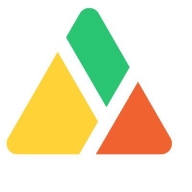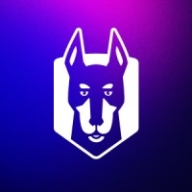

Apica and Snyk compete in the monitoring and vulnerability management category, respectively, each having unique strengths. Apica's robust alerting and global synthetic monitoring capabilities give it an edge in operational efficiency, while Snyk excels in developer-friendly vulnerability detection and remediation, emphasizing ease of use and actionable advice.
Features: Apica offers global synthetic monitoring, detailed dashboards for real-time monitoring, and an advanced alerting system that enhances operational efficiency. Snyk provides vulnerability detection with CI/CD and source control integrations, accurate vulnerability databases, and actionable advice for developers to rapidly address security issues.
Room for Improvement: Apica could improve GUI speed and user-friendliness, and enhance API access and alert control. Snyk can expand its functionality with more static and dynamic analysis capabilities, support additional programming languages, and improve plugin integrations for better vulnerability tracking.
Ease of Deployment and Customer Service: Apica supports hybrid, on-premises, and cloud environments with highly responsive and personalized customer support. Snyk focuses on straightforward cloud integrations, earning praise for their competent support teams, yet Apica’s direct engagement approach stands out.
Pricing and ROI: Apica provides cost-effective solutions with flexible pricing and strong ROI through effective alerting, reducing downtime. Snyk, despite being a premium product, offers value by aligning with developer participation models, ensuring ROI through comprehensive security coverage and functionality.
Their response time aligns with their SLA commitments.
We could understand the implementation of the product and other features without the need for human interaction.
Our long-standing association has ensured smooth communication, resulting in favorable support experiences and satisfactory issue resolution.
APICa is scalable.
Snyk allows for scaling across large organizations, accommodating tens of thousands of applications and over 60,000 repositories.
When editing scripts, only one can be accessed at a time, risking changes affecting other folders.
Both Veracode and Snyk should implement this new scoring system for CVSS and AIVSS.
The inclusion of AI to remove false positives would be beneficial.
It lacks the ability to select branches on its Web UI, forcing users to rely on CLI or CI/CD for that functionality.
Snyk is less expensive.
After negotiations, we received a special package with a good price point.
Snyk is recognized as the cheapest option we have evaluated.
It is useful for both performance and automation testing, facilitating access to headers and payloads easily, enhancing scripts with dynamic values.
Our integration of Snyk into GitHub allows us to automatically scan codebases and identify issues, which has improved efficiency.
Snyk helps detect vulnerabilities before code moves to production, allowing for integration with DevOps and providing a shift-left advantage by identifying and fixing bugs before deployment.
The best feature of Snyk is the integration with our ticketing system, which is Jira.
| Product | Market Share (%) |
|---|---|
| Apica | 0.5% |
| Snyk | 0.3% |
| Other | 99.2% |


| Company Size | Count |
|---|---|
| Small Business | 4 |
| Midsize Enterprise | 2 |
| Large Enterprise | 17 |
| Company Size | Count |
|---|---|
| Small Business | 20 |
| Midsize Enterprise | 9 |
| Large Enterprise | 21 |
Apica leads in observability cost optimization, empowering IT teams to manage telemetry data economics efficiently. It supports various data types, reducing costs by 40% with flexible deployment options and eliminating tool sprawl through modular solutions.
Apica Ascent optimizes observability costs across metrics, logs, traces, and events and provides adaptability beyond proprietary formats. Its patented InstaStore™ technology ensures maximum storage efficiency and advanced root cause analysis. Organizations leverage Apica for comprehensive control over observability investments, reducing runaway costs. With solutions for mitigating high-cardinality data challenges, Apica supports any data lake preference and offers cloud or on-premises deployments. Its modular solutions eliminate unnecessary tool redundancies, enhancing economic efficiency in telemetry data management.
What features define Apica's capabilities?Apica addresses industry needs in monitoring and testing applications, enhancing user experience across sectors. It is instrumental in synthetic checks, load testing, API monitoring, and validating functionalities for stability in gaming, finance, eCommerce, and banking platforms. Apica's versatility supports both on-premises and cloud environments, ensuring accurate insights into service availability and network performance.
Snyk excels in integrating security within the development lifecycle, providing teams with an AI Trust Platform that combines speed with security efficiency, ensuring robust AI application development.
Snyk empowers developers with AI-ready engines offering broad coverage, accuracy, and speed essential for modern development. With AI-powered visibility and security, Snyk allows proactive threat prevention and swift threat remediation. The platform supports shifts toward LLM engineering and AI code analysis, enhancing security and development productivity. Snyk collaborates with GenAI coding assistants for improved productivity and AI application threat management. Platform extensibility supports evolving standards with API access and native integrations, ensuring comprehensive and seamless security embedding in development tools.
What are Snyk's standout features?Industries leverage Snyk for security in CI/CD pipelines by automating checks for dependency vulnerabilities and managing open-source licenses. Its Docker and Kubernetes scanning capabilities enhance container security, supporting a proactive security approach. Integrations with platforms like GitHub and Azure DevOps optimize implementation across diverse software environments.
We monitor all Application Performance Monitoring (APM) and Observability reviews to prevent fraudulent reviews and keep review quality high. We do not post reviews by company employees or direct competitors. We validate each review for authenticity via cross-reference with LinkedIn, and personal follow-up with the reviewer when necessary.